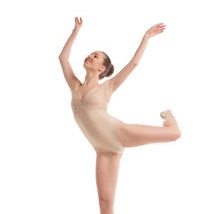Making the impossible possible, the possible easy and the easy elegant.
–Moshe Feldenkrais
 These words speak to how I approach working with “high performers. Before getting into more detail about that I would like to share a bit about my own journey.
These words speak to how I approach working with “high performers. Before getting into more detail about that I would like to share a bit about my own journey.
Many years ago I was struggling with finding a career direction. Back then I was doing quite a bit of mostly avocational dancing. Two things emerged. I became fascinated with how the greats like Baryshnikov and Michael Jackson at the time, did what they did with seemingly little effort. Second was that I ended up with ankle tendinitis that none of the medical interventions I tried could resolve.
I chose to first study Kinesiology (the science of movement) and learned lots about the mechanics of movement and how brain and body work together in producing it. At the same time I was doing a small amount of ballet teaching and was able to begin to link the theoretical and the practical. I went on to study physical therapy primarily for practical reasons, and ultimately Feldenkrais® and the Anat Baniel Methodsm that truly gave me an embodied sense of all of that academic knowledge.
During my now-thirty-plus-year career in the movement business I have been privileged to work with performers and athletes at all levels including members of the Pacific Northwest Ballet and Seattle Symphony.
Usually, high performers come to see me because of some pain or injury getting in the way of their participation. Occasionally folks show up strictly for performance improvement.
When I work with a performer or athlete I use my keen ability to analyze movement and compare that with what is more optimal. My sessions typically involve working with pointe shoes, a musical instrument or sports implement as appropriate. That accomplished, I use direct verbal instruction along with active movement as well as gentle hands on work to help my client have a stronger internal body sense of what is being asked for.
I like to think of my approach as a bridge between the instructor or coach and medical professionals. The teachers and coaches generally are very skilled at teaching required skills, but may lack the detailed knowledge of anatomy, body mechanics and individual differences that are at the root of the difficulty.
Medical professionals on the other hand would not work with performance enhancement alone. When it comes to injuries the paradigm is generally to fix the “broken” part without necessarily exploring performance mechanics as a whole and how the injury may be the result of that.
P.S., for the rest of us who want to live life as if it were a “high performance”:
Many of the aches, pains and injuries we all get from time to time have a root cause or predisposition in habits of posture and movement. I will use an approach very similar to that which I use with high performers to help you move through life in comfort and with ease and effectiveness.
If you found this interesting and would like some help, please give me a call at 206-842-4608 and we can talk about your unique situation.
